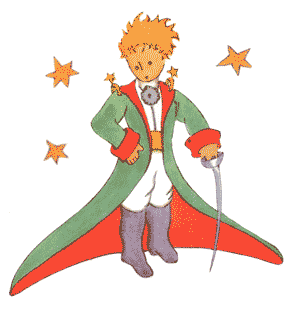
“Transport of the mails, transport of the human voice, transport of flickering pictures — in this century, as in others, our highest accomplishments still have the single aim of bringing men together,” said Antoine de Saint-Exupéry, French aviator, author, and visionary.
The Northport-East Northport community has a special connection to Saint-Exupéry through his celebrated work The Little Prince. The book was written during the fall and winter of 1942 in the twenty-two-room Bevin House built by industrialist Cornelius DeLamater. Saint-Exupéry’s wife, Consuelo, found this lovely white mansion overlooking Duck Island Harbor. She recounts that they called it “la maison du Petit Prince” (the house of the Little Prince). Speaking with his English tutor, Northport High School teacher Adele Breaux, Saint-Exupéry described the house as “a haven for writing, the best place I have ever had anywhere in my life.”
Unveiled September 16, 2006 in the courtyard of the Northport Public Library, the Little Prince statue commemorates the internationally loved classic by Antoine de Saint-Exupéry.
Saint-Exupéry was born on June 29, 1900 in Lyons, France. He packed many experiences and adventures into his all too brief life. These include serving in the French Air Force in 1921-1926 and again during World War II; pioneering airmail service in France, Africa, and South America; and writing two novels, several collections of essays and letters, and The Little Prince. Saint-Exupéry was reported missing in action, July 31, 1944. It is believed that he was shot down during a reconnaissance flight over southern France. The wreckage of his airplane was recovered from the Mediterranean Sea near Marseille in 2004.
Saint-Exupéry has been honored for his many endeavors. He won the French Prix Femina, 1931 for Vol de Nuit (Night Flight); a French Legion of Honor award, 1930 for peaceful negotiations with Spaniards and Moors in Morocco; the Grand Prix from the Academie Francaise, 1939 for Terre des Hommes (Wind, Sand, and Stars) and previous writings; the French Croix de Guerre for courage on reconnaissance flights, 1940; and the French Prix de Ambassadeurs, 1948 for Citadelle (Wisdom of the Sands).
It is mainly for his writings that Saint-Exupéry is remembered. These are imbued with his love of flight, the desert, and open skies. Like the pilot in The Little Prince, Saint-Exupéry also crashed in the Sahara desert and survived. Through the story of the little prince Saint-Exupéry expresses his belief that an individual’s happiness “lies not in freedom but in his acceptance of duty.”
The library owns many of Saint-Exupéry’s works, some in French.